The 2024 election cycle featured a constant stream of shocking stories and surprises. This nationwide influx of information can fail to capture the local realities of elections in places like rural Ohio. A granular analysis of elections in Kenyon’s home county provides insight into local partisan shifts reflecting Knox County’s place in the broader electoral landscape. Such an analysis also demonstrates that Knox County is more than a monolithic partisan stronghold; Knox County’s political diversity, while not always visible at first glance, is assuredly present.
After months of engagement with elections in the Knox County community, we at the Center for the Study of American Democracy have sifted through hundreds of pages of election results to provide insight into precinct-level trends in the county, shedding light on stories not covered by the national news media.
Knox County has reliably voted for Republican presidential candidates since 1968; 2024 was by no means an exception to this pattern. Republican Donald Trump won Knox County by a margin of nearly 45 percentage points, defeating Democrat Kamala Harris in all but four precincts of the county.
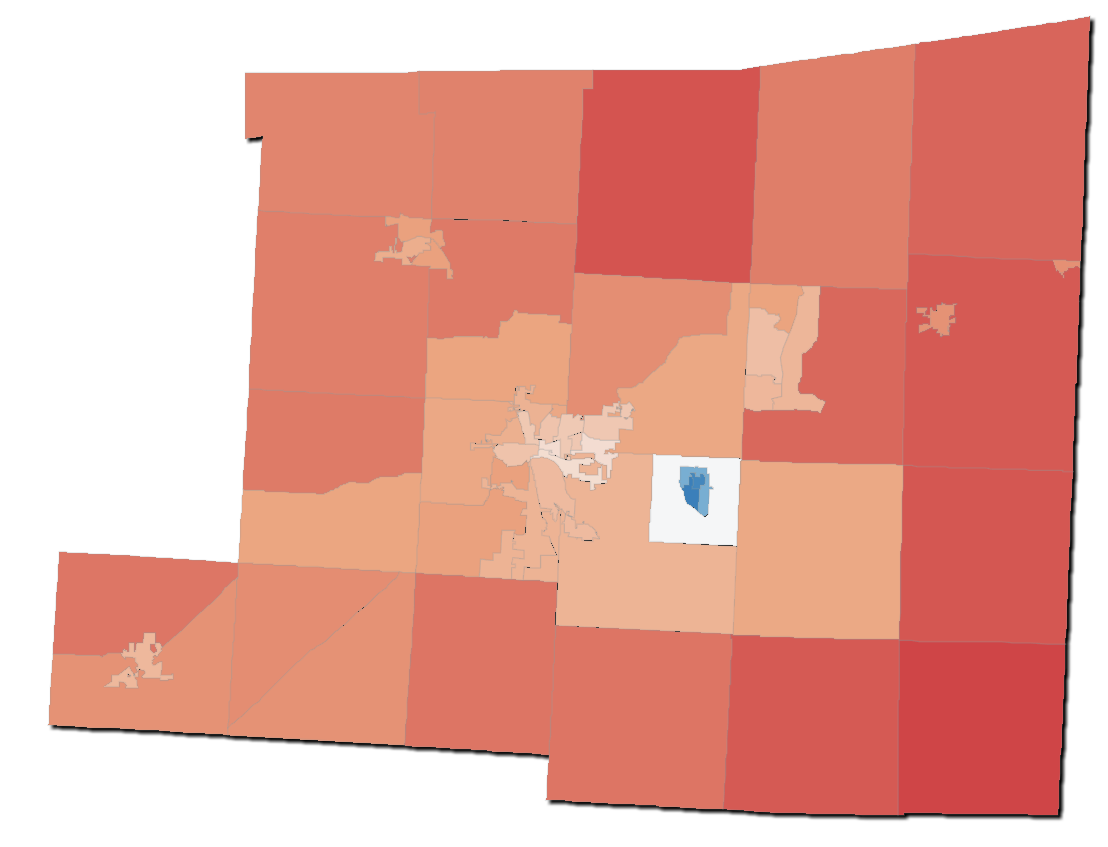
The county at-large shifted further towards Republicans in the 2024 presidential race, with Trump’s margin of victory increasing by nearly 2% since 2020. The countywide partisan split in the presidential election — approximately 72% Republican, 27% Democratic — was closely reflected in several other key elections, including the contest for Ohio’s 12th Congressional district (73% Republican, 27% Democratic) and a county commissioner election (72% Republican, 28% Democratic). These consistent partisan outcomes suggest that the candidates’ parties played an outsized role in determining local voter behavior.
Further evidence for the importance of party identification amongst local voters can be found in the results for recent Ohio Supreme Court elections. In Knox County, the three statewide judicial contests had an average partisan split of 72% Republican, 28% Democratic, again within a percentage point of the presidential election results. Prior to 2021, Ohio Supreme Court general elections were nonpartisan, meaning that the candidates’ parties were not listed on the ballot. When candidate party identification was added to the ballot in 2022, Ohio’s Supreme Court elections shifted dramatically towards the GOP, a trend maintained in the 2024 election. This shift again demonstrates the importance of partisan labels in determining voter behavior in Knox County elections.
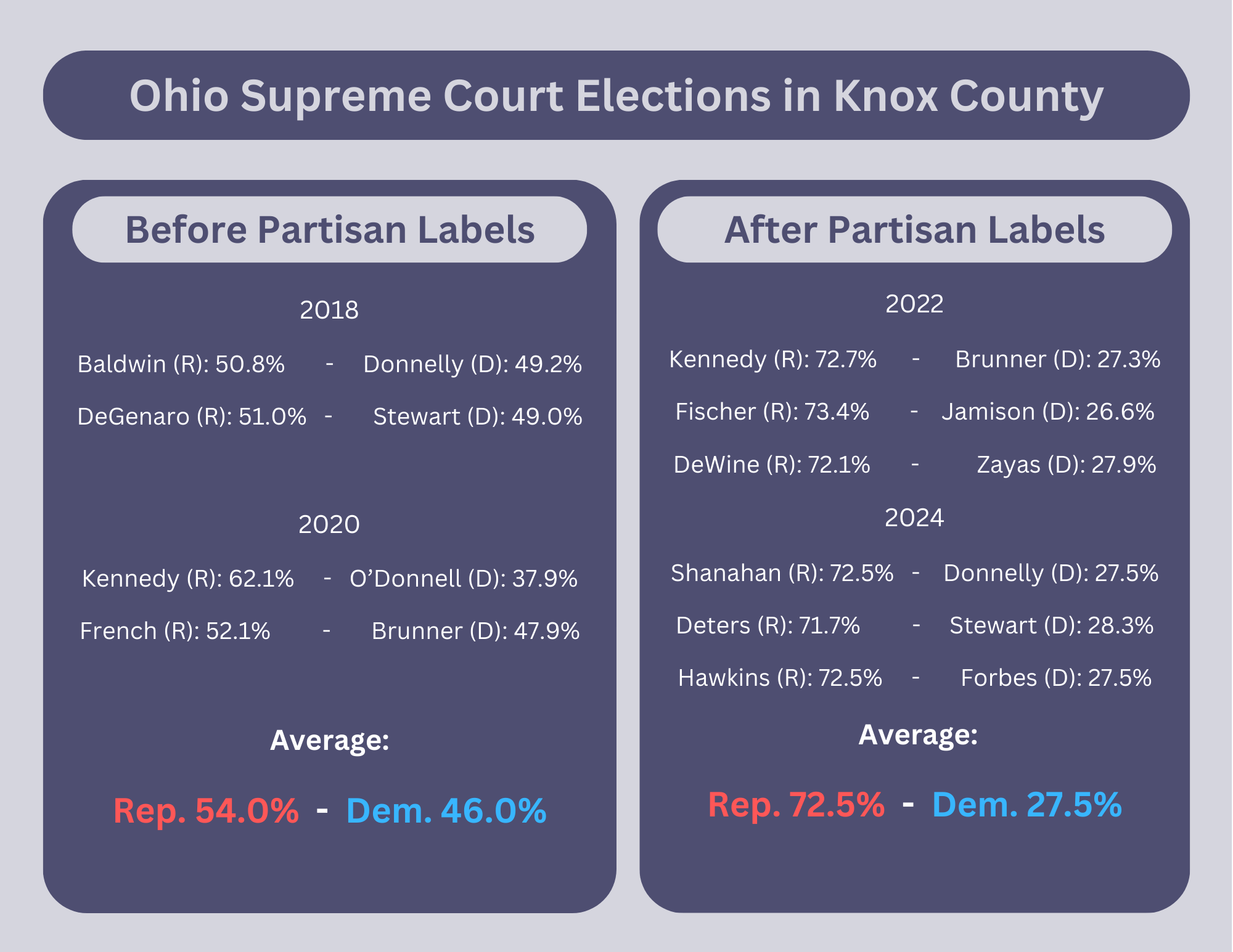
At the national level, several Democratic candidates for the U.S. Senate overperformed the Democratic presidential ticket. This trend was reflected in Knox County in the race between Democrat Sherrod Brown and Republican Bernie Moreno, in which Brown performed significantly better than Kamala Harris.

Brown saw better electoral results than Harris in every precinct in Knox County. Brown’s largest overperformances relative to Harris were in precincts like Jefferson and Morris A, both of which voted consistently for Republicans in other contests. Other significant overperformances for Brown were in precincts like Mount Vernon 1-A, 3-B, and 4-A, which voted for Trump by margins of approximately 16%, smaller than most Knox County precincts. Though Brown did perform significantly better than Harris in these precincts, unincorporated areas, such as Harrison and Pike, observed smaller differences between the votes for Harris and Brown. Even in this more closely contested Senate race, the results indicate that the candidate's party has a profound effect on Knox County voter behavior.
Just one contested Knox County election, the contest for District 7 of the State Board of Education, had no partisan labels on the ballot. This race, the contest between Republican-endorsed candidate Jessica Goeller and Democratic-endorsed candidate Rhonda Johnson, was the closest in Knox County in 2024.
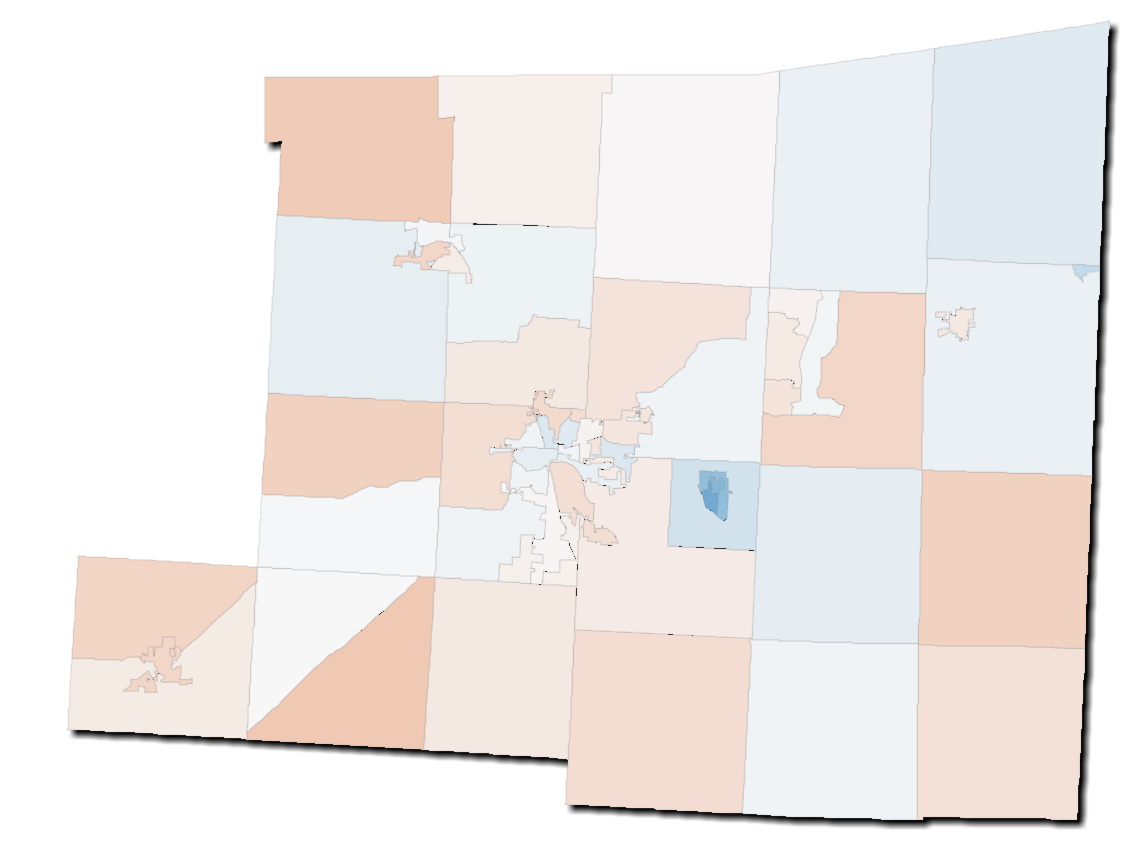
Though Johnson won overall in District 7 (which also includes portions of five neighboring counties), Goeller narrowly defeated Johnson in Knox County. The county was significantly more closely divided in its choice between these nonpartisan candidates than for any of its partisan elections. This was true in both heavily Republican precincts like Pike Township (in which the Democratic candidate outperformed Kamala Harris by a remarkable 73%) and in heavily Democratic precincts like Gambier C (where the Republican candidate outran Donald Trump by a similarly impressive 25%). This closely divided electoral outcome could further indicate that partisan identities (and partisan labels on ballots) are a deciding factor for Knox County voters.
Issue 1, a statewide constitutional referendum, was also a potential display of voter behavior. Issue 1 aimed to create a nonpartisan districting commission to draw congressional and state legislative districts in Ohio. Its intent was to remove partisan incentives from the redistricting process. State and county Democratic parties endorsed the proposal, while Republican party organizations opposed it. In the countywide vote total and across precincts, Issue 1 received very similar results to Democratic candidates, suggesting the proposed constitutional amendment was perceived as a partisan issue. Yes on Issue 1 received 30.60% of the countywide vote, right in line with the 29.80% won by incumbent Democratic Senator Sherrod Brown, and Kamala Harris’ 26.95%. However, if Issue 1 were a Democratic candidate, it would be the highest performing of any, including incumbent Senator Sherrod Brown. In 44 out of 54 Knox County precincts, including eight precincts in Mount Vernon, Issue 1 performed at least slightly better than the top-performing Democratic candidate.
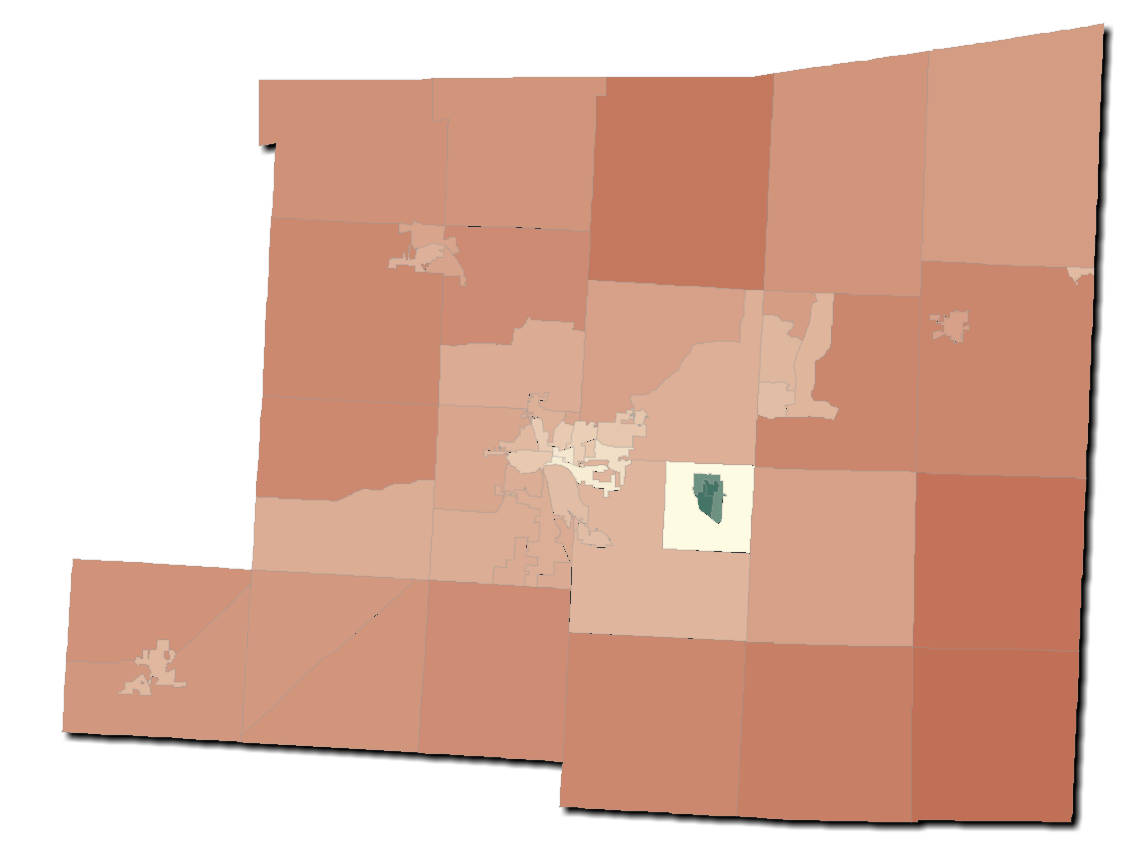
Issue 1 tended to perform very similarly to Brown or worse than him in more ideologically diverse precincts like Mount Vernon 2-A, 3-B and 3-C, precincts where Republican candidates won by less overwhelming margins. Conversely, Issue 1 received more votes than Brown by relatively large margins in deep red Mount Vernon 2-B, Jackson and Jefferson. The issue notably underperformed Democratic candidates in all three Gambier precincts, by as many as 10 points in Gambier C. Given the overwhelming Democratic margins of victory in the Gambier precincts, and the contradictory and often confusing campaign messages on Issue 1, it is perhaps not surprising that the margins of Democratic candidates surpassed those of the Democratic-supported Issue 1 in Gambier.
The performance of Issue 1 reveals that support for the amendment mostly fell along party lines, with Democrats voting for it and Republicans largely voting against. Yet out of all Democratic-leaning candidates or issues on Knox County ballots, Issue 1 most attracted cross-party voting. This data suggests that as controversial as it was, the Ballot Board’s choice of ballot language for the amendment may have had far less influence on the final results than partisan messaging. Given that Issue 1 was opposed by the Republican Party and supported by Democrats, the Yes campaign appears to have been persuasive to at least some Knox County Republican voters.
While these general results confirm the continued success of Republican candidates in the county, a closer look at precinct-level data demonstrates that partisan identities in the county do not fully account for voters’ choices. Some voters appear to have crossed party lines in the U.S. senate race and on Issue 1.
Knox County’s 54 precincts vary widely in size: the village of Brinkhaven’s sole precinct has just 50 registered voters and is one of the ten smallest precincts in Ohio, while Pleasant Township’s more than 1,000 registered voters make it one of the largest in the state. Likewise, the county’s precincts differ significantly in political orientation; while many precincts overwhelmingly favor Republican candidates, precinct Gambier C was the fifth most Democratic precinct in the state in the U.S. Senate election, with more than 97% of its votes being tallied for Sherrod Brown.
One in every five precincts in Knox County observed a partisan swing of more than five percentage points from the previous presidential election. Four of those precincts shifted towards Democrats, while the remaining seven swung towards Republicans.
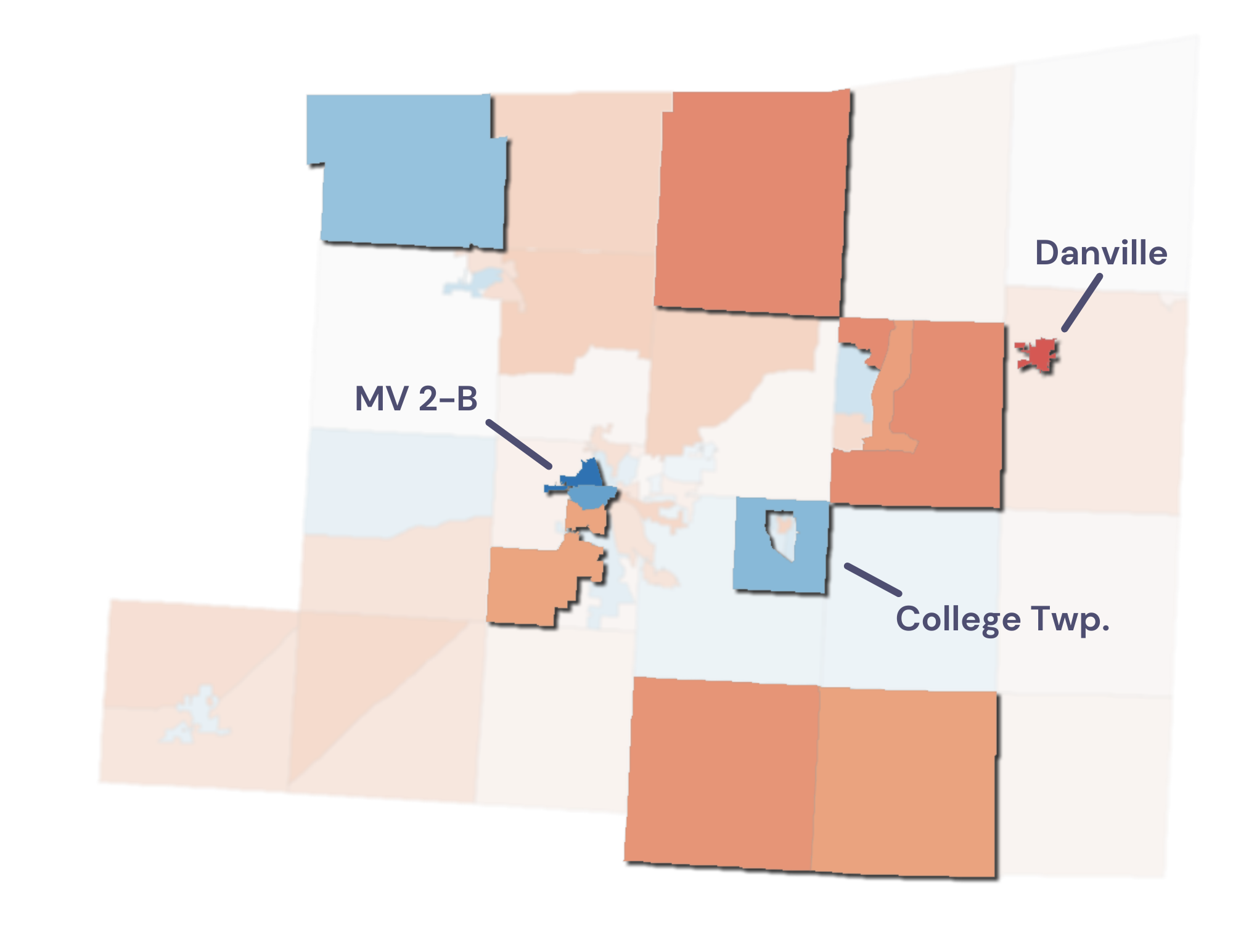
Though the results seen in Map 5 are difficult to explain, they display that different regions of the county swung towards opposing parties. The largest swing towards Democrats in the presidential election occurred in Mount Vernon 2-B. This precinct, encompassing the northwestern side of the city, shifted 11 percentage points towards the Democratic candidate for president since the 2020 election. On the other side of the political spectrum, the largest shift towards Republicans was a 7 percentage point swing in Danville. Although both of these precincts are located in Knox County population centers (as opposed to more rural townships), they shifted in opposite directions. The map also displays partisan shifts in opposite directions in local suburban and rural precincts, showing that shifts across the county do not conform to an incorporated-unincorporated divide.
Notably, one region flipped from a Republican to a Democratic majority in 2024: College Township, the rural precinct surrounding Gambier. The precinct’s six percent Democratic swing might seem to indicate that most of the county’s Democratic voters live in and around Gambier, but upon closer inspection, this assumption proves to be wrong. While the four precincts surrounding Gambier were the only places in the county with a Democratic majority in the presidential election, Gambier’s votes for Kamala Harris made up just ten percent of Harris’s total votes in the county.
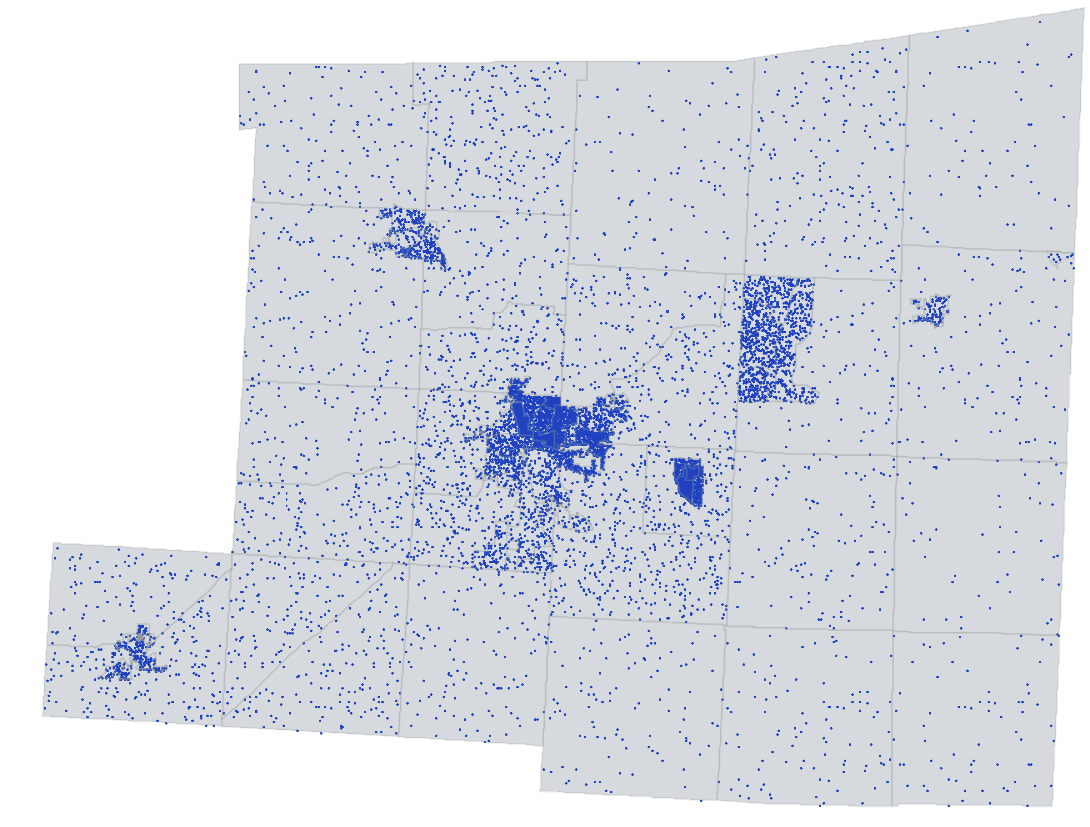
Map 6 shows that while many Democratic voters may live in Gambier, voters with views across the political spectrum live — and vote — throughout the county, from densely-populated towns to rural townships. Though Knox County residents may not agree on their candidates of choice, the county’s relatively high turnout displayed a commitment to the democratic system. Though Ohio’s voter turnout decreased more than 2% from 2020 to 2024, Knox County’s voter turnout — 74% — was more than 2% above the state average. Closer to Kenyon, Gambier’s turnout actually saw an increase from the 2020 election by more than 2%, reflecting the village’s vibrant history of democratic engagement. This year alone, the nonpartisan student associates at the Center for the Study of American Democracy registered nearly 500 voters, demonstrating the firm commitment to participation in local politics in Knox County and at Kenyon.
Cooper Bertschi’26, a senior CSAD associate, and Trey Loizzo ‘25, a CSAD student associate, are both double majors in history and political science.